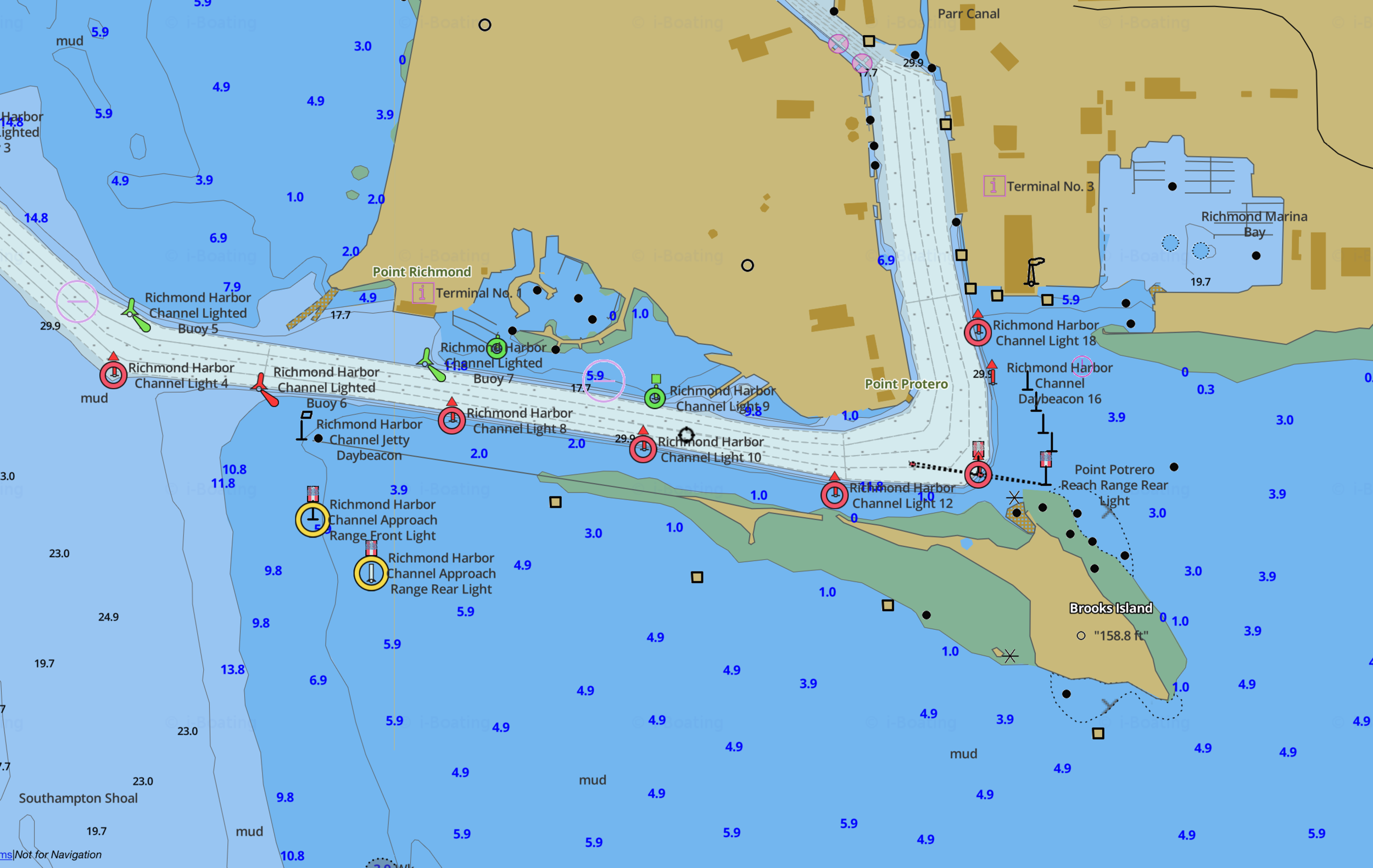Weather Conditions
PLEASE NOTE: All 510-Waterline classes are weather dependent. If the wind is blowing more than 10 mph (about 8.5 knots) 510-Waterline reserves the option to cancel class. Your account will be credited if 510-Waterline cancels a class due to wind and/or weather conditions. Our first priority is for you to enjoy a safe, fun paddle.
Current Wind and Weather
Forecast Wind and Weather: Week and Hourly
Tide Table at Richmond Inner Harbor
Richmond Harbor is a working body of water with lots of boat traffic, know where the channels are and where it is safe to paddle.
Rules of the Waterways: What Paddlers Need to Know
ALWAYS wear a Personal Floatation Device (PFD) and attach the board to your body with a SUP leash.
Paddle with a friend, don't paddle alone.
Carry a communication device - marine radio or cell phone - in a waterproof, floating case.
Check weather, tides, currents, channels, hazards. Know your water before you go out.
BE AWARE of your surroundings. You may be the only craft on the water or may be sharing the channel with a large container ship, tugboat, sailboat, fishing vessel, motorboat. Whatever the circumstance, your awareness of other traffic may make the sole difference in the safety of everyone on the water. Assume that the other vessel does not see you and will not stop or change course.
Busy waterways have lanes of travel. Know the area you plan to paddle. Buoy markers will line a channel on either side, when returning to harbor a boat must keep the red channel markers on its right side and the green channel markers to its left (Red Right Return). This will help you know where you should expect larger boats.
The depth of the channel may limit deep draft vessels. Deep draft vessels cannot maneuver out of these waterways, you can and must stay out of their way. You should only paddle in a boating channel to get across it. If you must paddle in a channel stay to the side, do not paddle in the middle of the channel. The safest place to paddle is outside of boat channels.
Do not assume that you can pass ahead of oncoming boats. The safest way for a paddler to cross the path of any other boat is to wait for it to pass and then paddle behind it. Cross another boat’s path as a group, do not straggle across a channel or in front of larger and faster vessels’ paths.
If you do get caught close to a larger, faster vessel get as far out of their way as possible. Aim for the back of the boat and give a wide berth. Prop wash and wakes from running motors are dangerous. As you encounter the wake turn the front of your board into the wave, get to your knees if you feel unsteady. You are much less likely to fall off if you take the wave head on, not from the side or from behind.
In the marina paddlers do not have the right of way. As a paddler you must give way and get out of the way of all boats. This is also true out on the Bay. Paddlers DO NOT have the right of way.
Adapted from Rules of the Road: What Paddlers Need to Know, American Canoe Association.
TWO MUST READS: Water Safety for Human Powered Craft on the 101 Surf Sports website and Boat Traffic on the BASK website.

